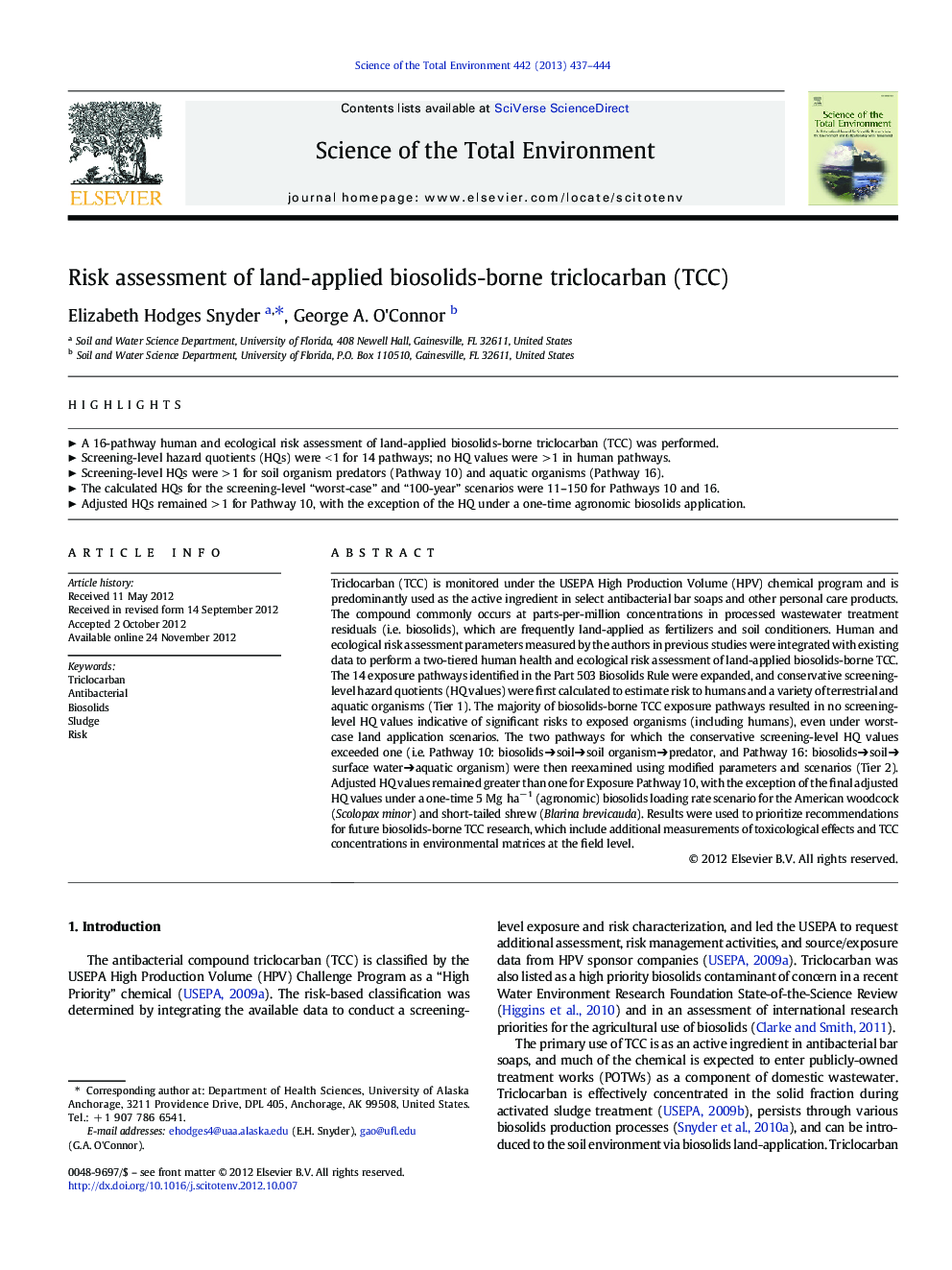| کد مقاله | کد نشریه | سال انتشار | مقاله انگلیسی | نسخه تمام متن |
|---|---|---|---|---|
| 4429016 | 1619811 | 2013 | 8 صفحه PDF | دانلود رایگان |

Triclocarban (TCC) is monitored under the USEPA High Production Volume (HPV) chemical program and is predominantly used as the active ingredient in select antibacterial bar soaps and other personal care products. The compound commonly occurs at parts-per-million concentrations in processed wastewater treatment residuals (i.e. biosolids), which are frequently land-applied as fertilizers and soil conditioners. Human and ecological risk assessment parameters measured by the authors in previous studies were integrated with existing data to perform a two-tiered human health and ecological risk assessment of land-applied biosolids-borne TCC. The 14 exposure pathways identified in the Part 503 Biosolids Rule were expanded, and conservative screening-level hazard quotients (HQ values) were first calculated to estimate risk to humans and a variety of terrestrial and aquatic organisms (Tier 1). The majority of biosolids-borne TCC exposure pathways resulted in no screening-level HQ values indicative of significant risks to exposed organisms (including humans), even under worst-case land application scenarios. The two pathways for which the conservative screening-level HQ values exceeded one (i.e. Pathway 10: biosolids ➔ soil ➔ soil organism ➔ predator, and Pathway 16: biosolids ➔ soil ➔ surface water ➔ aquatic organism) were then reexamined using modified parameters and scenarios (Tier 2). Adjusted HQ values remained greater than one for Exposure Pathway 10, with the exception of the final adjusted HQ values under a one-time 5 Mg ha− 1 (agronomic) biosolids loading rate scenario for the American woodcock (Scolopax minor) and short-tailed shrew (Blarina brevicauda). Results were used to prioritize recommendations for future biosolids-borne TCC research, which include additional measurements of toxicological effects and TCC concentrations in environmental matrices at the field level.
► A 16-pathway human and ecological risk assessment of land-applied biosolids-borne triclocarban (TCC) was performed.
► Screening-level hazard quotients (HQs) were < 1 for 14 pathways; no HQ values were > 1 in human pathways.
► Screening-level HQs were > 1 for soil organism predators (Pathway 10) and aquatic organisms (Pathway 16).
► The calculated HQs for the screening-level “worst-case” and “100-year” scenarios were 11–150 for Pathways 10 and 16.
► Adjusted HQs remained > 1 for Pathway 10, with the exception of the HQ under a one-time agronomic biosolids application.
Journal: Science of The Total Environment - Volume 442, 1 January 2013, Pages 437–444